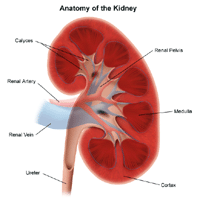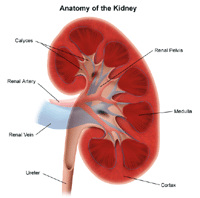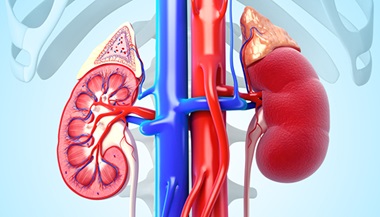Urodynamics
What Are Urodynamics?
Urodynamics are a set of tests that measure lower urinary tract function. The aim of testing is to reproduce your child’s voiding patters to identify any underlying problem.“Uro” refers to urine and “dynamics” refers to a continuous activity. This means that “urodynamics” is a continuing test, not just a single picture like in a chest X-ray. Through this way of testing, the doctor is able to obtain a great deal of information about your child’s voiding patterns.
If your child is ill or you think that your child has a bladder or kidney infection, please notify your child’s urologist, as the test may need to be rescheduled.
What Will the Visit Be Like?
You need to arrive at the Urology Clinic 1 hour before the testing is scheduled to begin. If you do not arrive one hour prior to when your test is scheduled, you may be cancelled and need to be rescheduled. This will allow preparations to be completed in time for your test. Please obtain any necessary referrals BEFORE coming for urodynamics. Usually, this the patient’s responsibility, and arriving without the referral may either delay or cancel your child's testing. Again, having the proper referral will prevent you from being billed improperly.
After registration you and your child will be greeted by the staff performing the urodynamics. Staff may include a doctor, nurse and/or child life specialist. Please be aware that several staff members are routinely in the room during testing so that your child can be closely monitored at all times.
If your child is able, we will ask that they empty their bladder on our uroflow machine. Next, your child will need to lie on an exam table so that the urodynamic monitors can be put in place. First, two small patches (electrodes) are placed onto the skin near the rectum, which record how well the sphincter muscle works. Next a thin tube, smaller than a rectal thermometer, is slipped into the rectum. This tube measures how hard your child's tummy muscles work to help him go to the bathroom. This is the muscle that holds urine in the bladder. Finally, a tiny catheter is placed into the bladder; this shows how well the inside of the bladder is working.
After these are all in place, the actual test is ready to begin. Sterile saline will slowly flow into your child's bladder. This may be done almost as slowly as the bladder would fill on its own, letting us see your child's usual bladder activity. During this long filling phase, you will see the staff monitoring the urodynamics computer while others are interacting with your child. Quiet diversion prevents any unrelated movement from being interpreted by the computer as bladder activity.
When the filling is completed, your child will be able to go to the bathroom in the special toilet; this will calculate how well the bladder empties. One of the most important measurements the urodynamic test records is the pressure inside the bladder and kidneys. Abnormal levels may affect how the kidneys function. After testing is completed, all the measuring tubes and patches will be removed and your child will be allowed to dress. You will receive the test results and recommendations immediately from your physician.
How Do I Prepare My Child for Urodynamics?
We understand that you are the person that knows your child best. However, as health care professionals, we know how to help your child get through difficult medical examinations. By working together, we hope to provide the best urodynamic evaluation with the least amount of stress for parents as well as child. Please let us know in advance of any special circumstance or needs your child may have.
There are several areas you can discuss with your child prior to testing. Describe the test using age-appropriate terms that you know your child will understand. Often, offering a very basic explanation of the test is all that is necessary. Allay fears by telling your child you will not leave them and can be right there during the entire test. Please discuss with your child that for catheter placement their genital area will be briefly exposed and that they will be touched there by the staff member placing the catheters. Since the person will likely be a stranger to your child, they may find this disturbing. Careful reassurance that you will be present for this will help to dispel fears. All attempts will be made by the staff to maintain your child’s privacy and dignity.
Please let your child know that although they will feel the measuring catheters being inserted, it does not hurt. Helping your child relax and lie still as much as they are able enables us to insert the catheters more quickly. Mostly, what is felt is the urge to go to the bathroom.
The night before the test takes place you will need to give your infant (0–1 year old) arectal glycerin suppository. For children 1to 10 years of age, please give them a Fleet pediatric enema. For anyone over 10 years of age, please give an Fleet adult enema sometime after dinner. This will empty the rectum, which will aid us in getting better information from your child’s test, as well as eliminating the need for your child to visit the bathroom during testing.
What Should We Bring?
Feel free to bring your child’s favorite DVD for viewing on our television during the test. Also welcome are blankets, stuffed animals, books, pacifiers — whatever comforts your child. You may also bring your child’s own large T-shirt to wear during testing, rather than a hospital gown. This makes some children feel better about having any test. A change of clothes, including socks, may be a good idea to bring as well.
What Should We Expect after Urodynamics?
Be aware that your child may complain of the need to urinate even after the test is completed. This is usually due to minor irritation from inserting the bladder catheter. Drinking lots of liquids may help, so that the urine becomes diluted and less irritating. The following may be normal after urodynamics:
Blood in urine
Burning on urination
Urge to urinate
Wetting self
The following is NOT normal after urodynamics:
High fevers
Significant bleeding
Rashes
We hope that this information begins to answer some of the questions you may have regarding urodynamics. For further information, you may contact the pediatric clinical technician.





